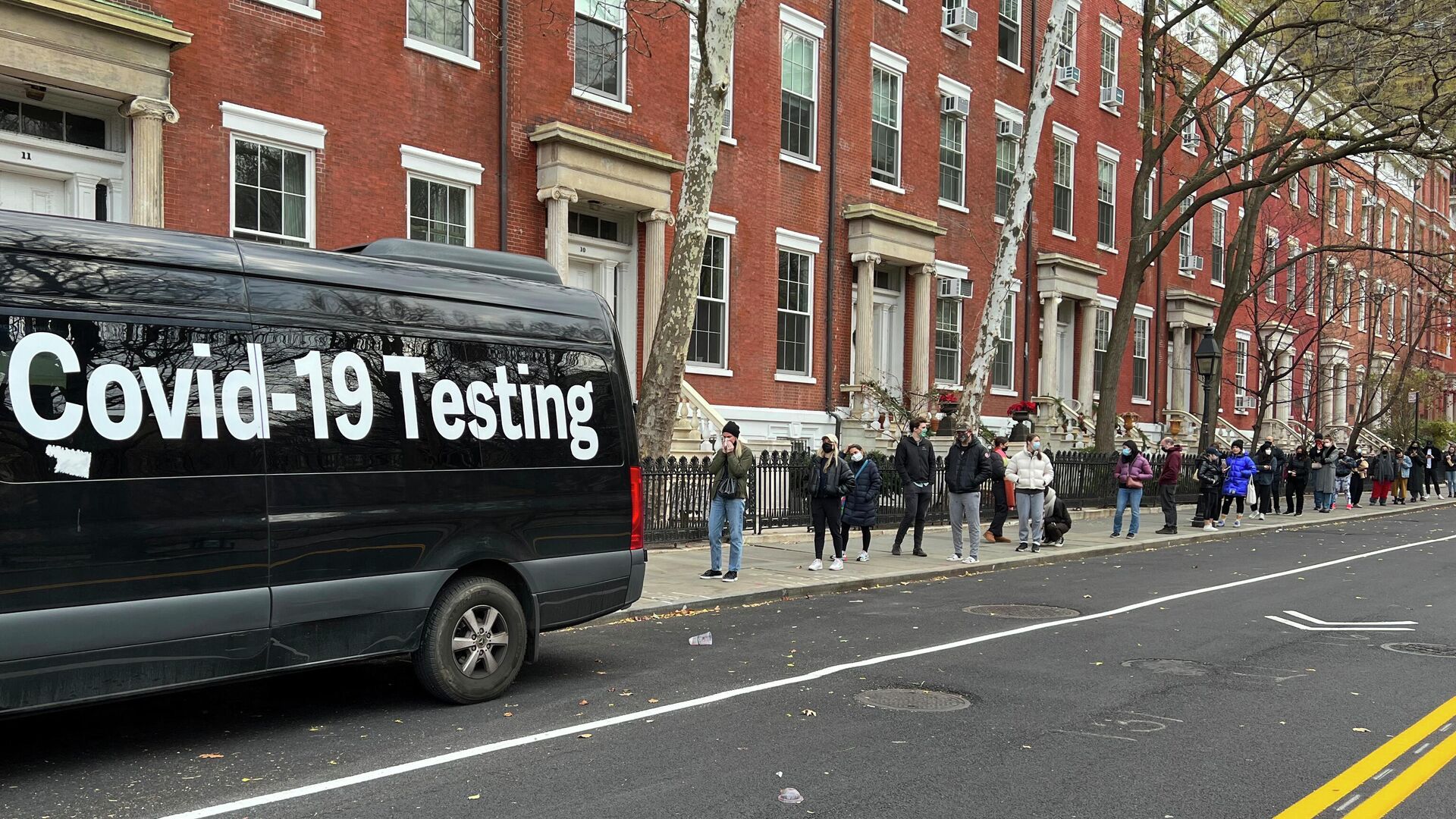Quick-Spreading Omicron Variant Now Dominant COVID-19 Strain in US, Making Up 73% of Cases, CDC Says
22:52 GMT 20.12.2021 (Updated: 13:27 GMT 06.08.2022)

© AP Photo / Brooke Lansdale
Subscribe
The US Centers for Disease Control and Prevention (CDC) announced on Monday that 73% of the new COVID-19 cases detected in the previous week were from the Omicron variant, identified just a few weeks ago by South African scientists.
The variant has quickly displaced Delta as the dominant strain in the US, which has reigned supreme since the summer. Both variants have evolved to be more infectious than previous variants of SARS-CoV-2, with Omicron containing an exceptional number of changes to its infection tool, called the spike protein, making it a "variant of concern" for the World Health Organization (WHO).
The WHO revealed on Monday that Omicron spreads even faster than Delta and has the ability to penetrate the immune systems of people who have previously had COVID-19 or been vaccinated against the SARS-CoV-2 virus.
A study published on Friday by Imperial College London based on UK Health Security Agency and National Health Service data found that Omicron is about five times as transmissible as Delta and found that, despite early beliefs Omicron would have weaker symptoms, the variant was proving no milder than any other SARS-CoV-2 strain.
In several US cities, Omicron had already become the dominant strain, accounting for perhaps 90% of new cases in New York City, which set new records last week for daily number of new cases. In Washington, DC, Mayor Muriel Bowser declared a state of emergency on Monday after seeing a similarly dramatic and record-setting spike in cases. The first Omicron case was only identified in the US three weeks ago.
On Sunday, the US' seven-day moving average for daily new cases stood at 132,659, according to CDC data. As of Sunday, 803,593 Americans had died of the virus, with the seven-day moving average for daily deaths being 1,169 that day.
US President Joe Biden rejected the notion of a new lockdown on Monday, instead redoubling his administration's message for Americans to get vaccinated, including getting a booster shot that can better protect against the virus. However, a Friday statement by his spokesperson, Jen Psaki, that shamed unvaccinated people fell flat and was widely panned for its perceived callousness.
"We are intent on not letting Omicron disrupt work and school for the vaccinated. You’ve done the right thing, and we will get through this," Psaki said. "For the unvaccinated, you’re looking at a winter of severe illness and death for yourselves, your families, and the hospitals you may soon overwhelm."
Despite the messaging, the pace of vaccination in the US has slackened in recent days, with a seven-day average of 1.4 million on December 15, the last day for which such data exists, down from 1.7 million per day two weeks earlier. Just over 61% of the US population has been fully vaccinated, and 29% of them have received a booster shot. The US has not yet begun vaccinating children under 5 years of age, and began vaccinating children ages 5-11 in early November.
The nationwide spike has come just days before the Christmas holiday, when 109 million Americans are expected to travel to see their families, according to American Automobile Association (AAA) estimates.

